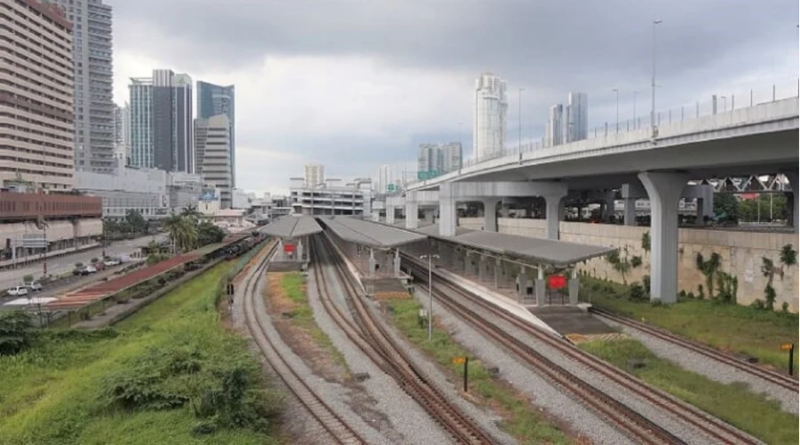Termination of HSR plus point for JB city centre, negative for Iskandar Puteri
The termination of the Kuala Lumpur-Singapore high-speed rail (HSR) project will negatively impact properties in Iskandar Puteri in Johor.
In contrast, the no-go for the bullet train project will have a positive impact on properties in Johor Bahru (JB) city centre, including the Danga Bay area.
Malaysia and Singapore have decided to terminate the multi-billion ringgit HSR project as both countries could not reach an agreement on several changes that the Malaysian government proposed.
Datamine Malaysia head of research Jerren Lai said the lack of a major catalyst like the HSR project will slow the growth in property prices in Iskandar Puteri, including Puteri Harbour.
“Many people were looking forward to the HSR and developers had been planning future projects in the Iskandar Puteri region in anticipation of demand coming from Singapore. The situation will change with the cancellation of the project,” he said.
Lai told NST Property that JB CIQ (Customs, Immigration, and Quarantine Complex) and the surrounding areas will now become more popular among homebuyers and developers.
He expects that the value of properties in the JB CIQ area will move in tandem with the Rapid Transit System (RTS) development, connecting Johor Bahru with Woodlands in Singapore.
“A lot of people are confused between the HSR and the RTS. Many people assume that when the HSR is cancelled, it will create havoc in the industry. The truth is, only certain areas will be affected by the cancellation of the HSR and these are areas where developments were being planned by developers to ride on the rail network,” Lai said.
“But we still have the RTS-Gemas double-tracked railway line that is currently under development and will be constructed all the way to KL Sentral in the future. In a way, the RTS-Gemas line is a duplicate of the HSR as both lines aim to link Kuala Lumpur with Singapore. If you see it, the termination of the HSR will not have much impact in terms of connectivity between JB and Singapore as people can still travel on the RTS-Gemas line, all the way to Kuala Lumpur.
“The HSR was expected to take 90 minutes to travel from Kuala Lumpur to Singapore. The RTS-Gemas line will take three and a half hours and this is a major improvement from the current KTM service which takes about eight to nine hours,” Lai said.
Why JB CIQ will become more popular
Lai explained that the HSR line was expected to come from the second link side, also known as Tuas second link and many had expected property prices to increase in the Tuas area and Iskandar Puteri.
“When the HSR is cancelled, it will impact properties in Tuas and Iskandar Puteri, but not the JB CIQ side because of the RTS-Gemas line. We expect demand will shift to JB CIQ and this will make both land and property in that area more valuable.
“The RTS and Gemas are two separate projects but it is a connecting line, with both having a terminal at JB CIQ. JB CIQ area will become a major interchange for the two lines and a popular hub just like KL Sentral. The Gemas line will be ready next year and the RTS will take about five years. So in five years from now, there will be proper rail connection in JB city centre with service all the way to Kuala Lumpur and Singapore,” he said.
Lai expects JB CIQ properties will be significantly influenced by Singapore Woodlands’ valuation once the RTS construction starts full scale.
“It is projected that JB CIQ property prices will be 30 per cent lower than Singapore Woodlands once the RTS is up and running. The current six-year delay on the RTS has not only stagnated prices at RM921 per square foot (psf) but resulted in some distressed sales,” he said.
Datamine’s projection is based on the most common type of real estate valuation method in Malaysia, that is a comparison on location proximity, condition and property size.
JB CIQ valuation path will not likely be a ‘straight-line’ progression from its current 240 per cent gap vs Woodlands to the forecast point of 30 per cent differential.
Lai said during the construction phase, the valuation will likely fluctuate in tandem with perceived efficiency on factors such as timeline, immigration clearance system, crowd control system that will interplay to form the market price.
He said once the RTS is completed, it will be faster to get to Singapore Woodlands from JB CIQ than to the nearby Larkin area.
The journey will take five minutes and another 35 minutes via the upcoming Thompson-East Coast MRT line to downtown Singapore Orchard Boulevard station, he said.
The latest Urban Redevelopment Authority 2020 Q4 (URA Singapore) reports that Woodlands (District 25) private property median price stands at SGD737 psf (RM2,211 psf) while Orchard (District 10) at SGD1,968 psf (RM5,904 psf)
In contrast, the latest Iskandar Property Census research that systematically tracks Johor properties since 2012 recorded JB CIQ median price at RM921 (SGD307). This represents a 2.4 times price gap compared to Woodlands and 6.4 times gap to Orchard area.
JB CIQ median price is computed from Datamine Malaysia census data comprising eight properties – Skysuites (RM635 psf), Sky Habitat (RM800 psf), V Summerplace (RM748 psf), TriTower (RM1,253 psf), Suasana (RM1,350 psf), R&F Princess Cove (RM910 psf), Twin Tower (RM791 psf), Paragon Suites (RM880 psf).
In the Iskandar Property Census 2020 Q3 Report, the findings showed that there was no shortage of demand for Johor properties. Connectivity barrier is the major factor hindering Singapore demand from reaching Iskandar supply and efficient RTS implementation is all the more critical given HSR cancellation.
Source: NST

